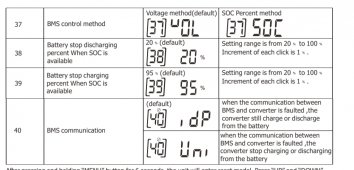I know a bunch of the all-in-ones can support batteryless operation (while only in single and not stacked topology), I would only operate like that in a bind, perhaps in a mobile or emergency situation. Even if I didn't want batteries, I would at least install some small ones, and it can greatly add to the surge capacity for starting motors (even though it wouldn't have much KWh capacity behind it), it would help settle out the peaks and dips, which seems to me it would help things last longer, and not put your AC output circuits at the same risk for surges or brownout type behavior which could be harder on appliances.
Ian at watts247 had a nice demo of this on an LVX6048 batteryless video on You Tube I liked, he showed batteryless, and then with some small batteries, and it handled surges better for starting motor loads. Batteries help the inverter input to handle inrush load better as it provides a good buffer in between, like a shock absorber in the circuit...
That's just my rough opinion on running batteryless.



